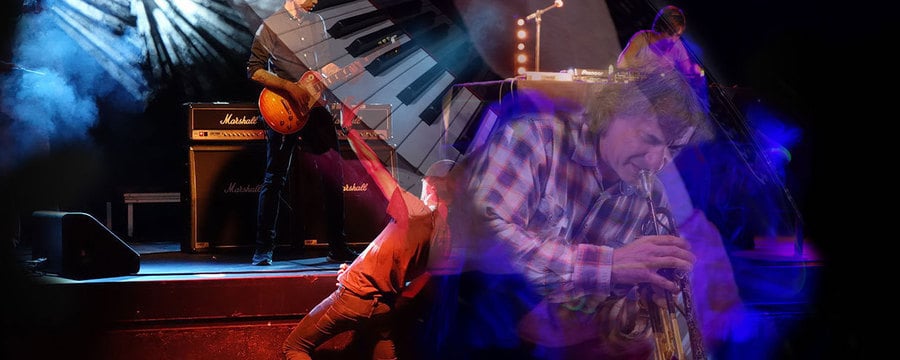Music, emotion, motion and friends

Share this step
When talking about emotional music, we often describe it as ‘moving’. Body motion is one of several links between emotion and music. In this article we will look at three of these links, with a focus on body motion.
One way of tying emotion and music together is learned association. Like the process of learning bodily metaphors, described in 6.3, sometimes we learn musical metaphors through repeated exposure. For example, your favourite film might feature Samuel Barber’s Adagio for Strings during a sad scene. When you watch it, the concrete “source domain”, the piece of music, may be mapped onto the abstract “target domain”, the feeling of sadness. When you listen to the piece of music on its own, you might associate it with sadness or even feel sad yourself.
Another theory of emotion in music is termed music expectation, or melodic expectation. This is the principal argument in Leonard Meyer’s Emotion and Meaning in Music. He argues that listeners come to a piece of music with a large body of musical experiences. Because of this, they have expectations about what will happen in the piece of music. Music can induce emotion by generating, fulfilling, prolonging or violating these expectations. This can produce the emotions of anticipation, satisfaction, desire and frustration in the listener, through the structural relationships in the sound.
A third theory says that music communicates emotion through expressive emotional movement. This theory looks at the perceivable behaviours which happen together with the subjective experience of an emotion. For instance, when a person is sad, they tend to make smaller, slower movements than someone who is happy. Their body might droop downwards. They might also mumble, speaking with a low-pitched, quiet voice which has less variation in pitch. According to this theory, you may think that the Adagio for Strings sounds sad because it contains expressive motion. In other words, it sounds like someone who is moving in a sad way. Its beginning is slow, low-pitched and has relatively little pitch variation.
Let’s look at two studies which examine expressive emotional movement.
Sievers et. al. (2012) posit an “empirical method for testing whether music and movement share a common structure that affords equivalent and universal emotional expressions”. In other words, their study had two goals. Firstly, to see if the ways emotion is expressed in music and movement are equivalent. Secondly, to see if these kinds of expression are universal.
In their first study, participants in the US manipulated five slider bars which controlled five dynamic features, in order to create a clip of either an animated moving ball, or music. They were asked to express different emotions. The critical finding was that “For our United States population, music and movement shared a cross-modal expressive code”. That is, subjects who used music to express an emotion set the slider bars to a similar pattern of positions as subjects who expressed the same emotion with an animation of a moving ball.
Their second study was conducted in a similar manner, in L’ak, a village in Cambodia which has maintained a high degree of cultural isolation. They achieved significantly similar results. Because of L’ak’s isolation, the similarity is arguably evidence that the links between motion, emotion and music they found are in some ways universal.
Sievers et. al. build on Dehaene and Cohen and suggest that cross-modality (the link between sound and movement, for example) is the natural result of efficient coding in the brain.
“Dehaene and Cohen suggest music “recycles” or makes use of premusical representations of pitch, rhythm, and timbre. [Sievers et. al.] hypothesize that this explanation can be pushed a level deeper: neural representations of pitch, rhythm, and timbre likely recycle brain areas evolved to represent and engage with spatiotemporal perception and action.”
In this concept, late-developing cultural abilities like playing music rely on systems developed for older activities in the brain.
Another cross-cultural study, between an isolated population of Mebenzélé Pygmies and a group of Canadian music listeners, found that valence responses to music were quite different between the two groups. When asked whether the music had a positive or negative mood, their answers varied a lot. This would suggest it’s culturally learned, and personally variable.
However, they noted that “music-induced arousal responses appeared to be based on rather universal, culturally independent response mechanisms”. So, when the question was changed from “positive or negative” to “arousing or not arousing”, there was a significant link. Both groups for example responded with increased subjective and physiological arousal when the music had a higher tempo. So, while it would seem that perceptions of valenced emotions in music requires conscious interpretation based on symbolic and associative meaning, this study also presents evidence that ratings of music as more or less arousing is partially dependent on low-level acoustical factors in the music.
Most importantly, these three theories of music’s emotionality are not mutually exclusive. The existence of various processes can account for how emotional responses to music can seem at once so universal and so personal.
Sources
Hauke Egermann, Nathalie Fernando, Lorraine Chuen and Stephen McAdams. Music induces universal emotion-related psychophysiological responses: comparing Canadian listeners to Congolese Pygmies. Frontiers in Psychology, 2015.
Beau Sievers, Larry Polansky, Michael Casey and Thalia Wheatley. Music and movement share a dynamic structure that supports universal expressions of emotion. PNAS, 2012.
Leonard Meyer. Emotion and Meaning in Music. University of Chicago Press, 1962.
Share this
Music Moves: Why Does Music Make You Move?


Reach your personal and professional goals
Unlock access to hundreds of expert online courses and degrees from top universities and educators to gain accredited qualifications and professional CV-building certificates.
Join over 18 million learners to launch, switch or build upon your career, all at your own pace, across a wide range of topic areas.
Register to receive updates
-
Create an account to receive our newsletter, course recommendations and promotions.
Register for free







